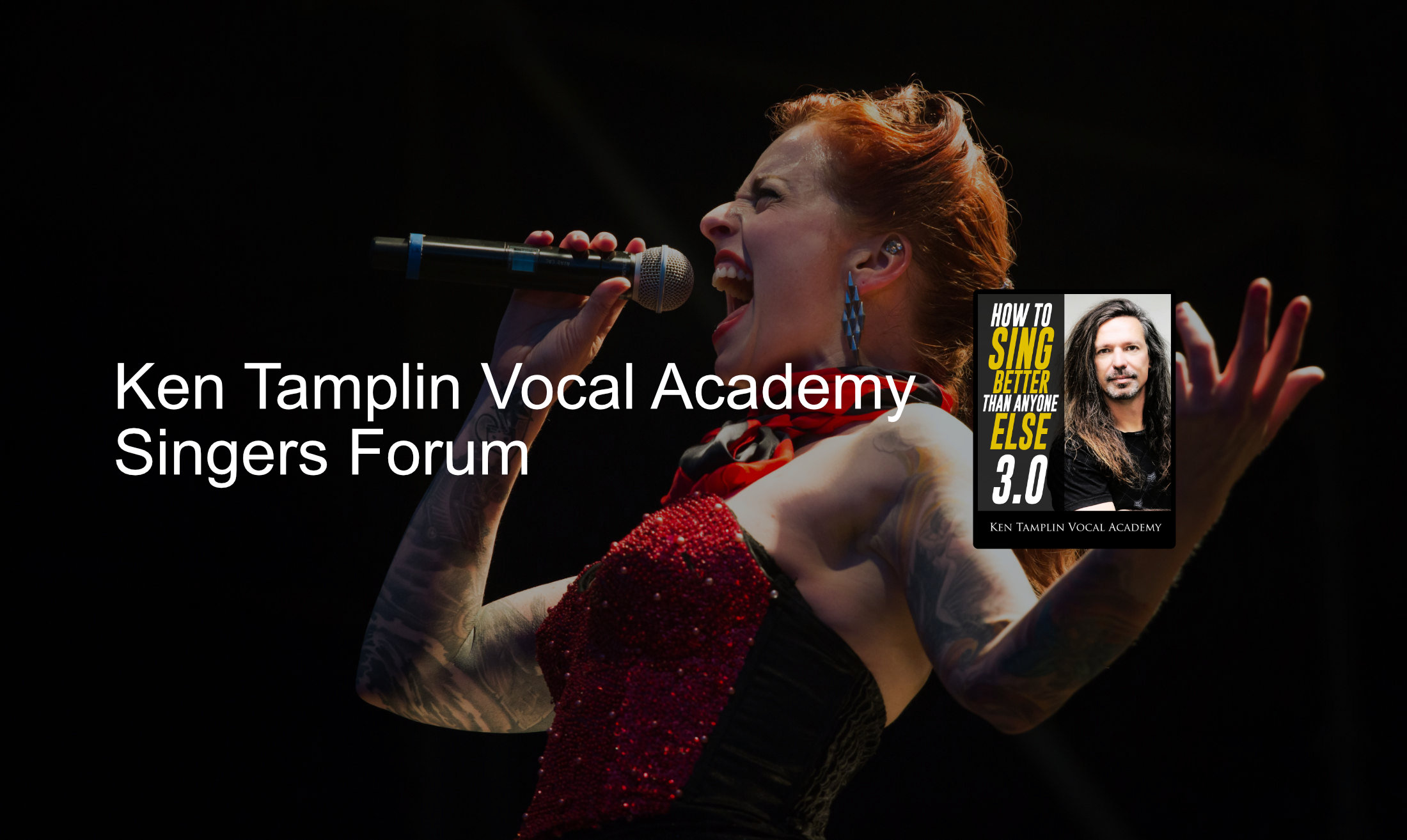Recording Microphones
Best Answer
-
 Ken Tamplin
Administrator, Moderator Posts: 446
Ken Tamplin
Administrator, Moderator Posts: 446
Guys I wish I could be more helpful on this.
Most of the stuff I use are high end tube mics.
My personal fav (the one I use all the time) is my Neumann M 149 for vocals thorugh an avalon 737 SP pre-amp-compressor-eq.
This is a magic combination.
An old Urei 1176 and an LA 22 are great as well for vocal compression.
SM 58's are all around decent live mics for vocals but that's about all they really good for. An SM 57 works better on the snare.
Sennheiser 421's are great for toms.
I LOVE my Geffel UM 70's. They work on everything from overhead cymbals, to acoustic guitar, piano, strings you name it.
An AKG BTL II (with the C -12 cap) works for softer voca as does a 414.
The Byer Dynamic ribbon mic is decent too for vocals and some electric guitar stuff but again, a 57 on the cone works just about as well.



Answers
...Depends on how FAT you want your vocals to sound. Doubled, Tripled, Quadrupled unison vocals are standard on certain styles of vocals. Compression and Limiting also can contribute to a thicker sounding end product.
Get your vocals sounding right on a single-tracked sound, and then if you need the processed monster vocals, expand from there. Sky's the limit to what you can do, but you need to get the core, unprocessed vocal right before you start slathering on all the enhancements. Cornell or Grohl are starting with great tone and technique even before adding the recording magic. The magic just makes the great vocals sound even more astounding.
Sannino,
I don't mean to speak in place of Ken, but here's my own two cents worth on the mics you are asking about...
The Shure 58's are just a good, all-purpose, heavy-duty mic that is used live and in studios for just about everything. Vocals, drums, guitars, you name it, it can take it. The 58's roll off on the high frequencies at about 15khz, and don't go any lower than around 50 hz. Condenser mics can commonly extend beyond 20 khz on the high frequencies, and go down to as low as 20 hz. That may be preferable for a more "Studio" sounding recording. The Shure SM7 you mentioned is more of a broadcasting mic than either a 58 or a condenser. The SM7 does extend up to 20 khz on the high's, so you might like that, and perhaps it has a nice, warm low frequency sound that is characteristic of dynamic mics vs condenser mics. The Samson C01U is a lower-cost mic, and some of the reviews state that you get what you pay for. Try them all out in a side-by-side test in a music store. Trust your ears, and save up to buy what you really want the most.
Good luck.
Bob H.
The first is a studio condenser mic. It was a gift to me from a friend, including stand, pop filter, USB interface, cable, headphones. It is very sensitive and I would overload it regularly. Recently, I learned that I was placing it wrong. More on that in a second.
My second mic is a Sennheiser e835 dynamic mic. Originally, I was shopping for a Rode M1. I went to Guitar Center in Plano, Texas. I was telling the sales associate what my problem was. That I was looking for the M1, which is considered to be a valid replacement for the Shure sm58. But that my problem is that I am a high-pitched loud singer. So, he recommended, though I didn't buy from them, the Sennheiser. It's what he sells most often to singers such as myself. And it does have a better reponse. It does not flatten the response on high, loud notes. I mean, I can do an Ab5 that will make you flinch.
So, I bought one on ebay for half of retail, free shipping. And it puts up with the onslaught.
And then I found where I was wrong in mic placement, especially for condenser mics. For loud singers such as myself, the mic should be placed even in height with the bridge of the nose and angled slightly down. Or suspended upside down from above in approximately the same position. If you look in Ken's genre sample videos, that is what he is doing. I had been placing the mic just below chin level and flat on to me.
So, you don't have to spend a lot on mics to have a good quality. You just have to know what you are doing with it, which I am still learning.
Mixing and recording, that's an albatross, for me. I am still learning about that and I use Audacity, which has limitations but it is good for the price (free.) My other thing to learn is that recording is not like live. Any foible is there for all time. Everyone, regardless of experience, makes mistakes. But the good recordist accepts nothing less than perfection.
Which doesn't stop me from just recording myself and guitar. I did one recently and it reminded me of a scratchy LP being played on a station in the 1970's. Actually, that's kind of a neat effect.
For recording, I like my AKG C414 XL II - @$900. This is a standard, and probably the first "step up" for a home/project studio.
Condensor mics are more sensitive than dynamic mics. Condensor mics require phantom power from your board (or you can get separate phantom power supply), and they are much more delicate (though not as delicate as ribbon mics). So condensor mics need more care if you want to take them out on gigs.